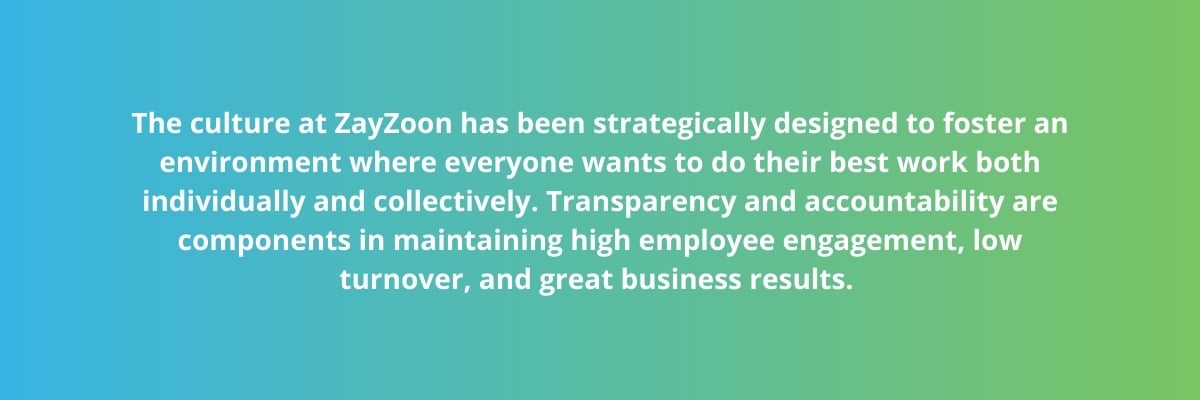
Culture Eats Strategy for Breakfast
It is said, “Culture eats strategy for breakfast” and this couldn’t be more true for corporations who struggle to attract and retain top talent. Why is it then that so many companies rise and die while others thrive and continue to grow? As employees demand more from their employer, it is critical for businesses to view their people as their strongest asset, with a deep focus on how things are done, not just what gets done. Employees play a vital role in the success of any business. So the question remains: how do you create and maintain a culture?
The last 18 months have allowed people to reevaluate and prioritize what’s important, both in their personal and professional lives. In this period of reckoning, folks are paying closer attention to the type of company they want to work for. While a competitive salary, employee benefits, and growth opportunities are all important considerations, they are not the only ones.
Culture is often the deciding factor when employees are presented with more than one potential employer. While there are varying interpretations and definitions of what culture really means, Deloitte describes it as, “the way things work around here.”
Ben Horowitz describes a successful culture as one that can:
- Distinguish you from competitors
- Ensure that critical operating values persist such as delighting customers or making beautiful products
- Help you identify employees that fit with your mission
Culture is made up of many individual puzzle pieces that all lend themselves to a company's brand, mission, and values. It's how these pieces fit together and how they are strategically showcased in the day-to-day actions at every single level of business that determines the longevity and success of your culture.

Culture starts and ends with your team.
Putting a lot of time and effort into building a team that will continue to live and breathe your core values is essential to the success and longevity of any company. “We have a philosophy that we are always recruiting. We are always on the lookout for A-players,” Co-Founder and CEO, Darcy Tuer explains.
Recruiting is an extensive process that includes multiple-stage interviews designed to discover what is beyond the candidate’s competency. We want to make sure at every step that this will be the right fit -- both for our team as for the incoming ZayZooner.
“ZayZoon is selective in our hiring, even in a challenging labour market, which has helped us maintain our extraordinary culture,” Darcy indicates. “Hiring for fit is paramount as we anticipate the need to grow the team at a significant pace to support the demand that our growth team has started to create without eroding our culture.”
This interview process is not just one-sided either. Interested candidates will typically ask questions that go past the standard vacation, benefit, or salary expectations. We will often get questions asking to elaborate on the company’s brand, mission, values, team activities, culture, and more importantly, how these are experienced on an individual and group basis.
By the time an employee starts their first day at the company, they will have spent a considerable amount of time with various individuals in the organization.
The culture at ZayZoon has been strategically designed to foster an environment where everyone wants to do their best work both individually and collectively. Transparency and accountability are components in maintaining high employee engagement, low turnover, and great business results.
Speaking of turnover; it’s a concern for any organization. The Bureau of Labor Statistics estimates the annual turnover rate in the US was 26.3% in 2017. Replacing an employee can cost 1.5X to 2X the employee’s annual salary, not to mention that losing engaged, talented, and hardworking employees have an effect on the overall team morale which in itself can be like falling dominoes. Low team morale has the potential to jeopardize external relationships, paralyze a business from moving forward, and create a toxic work environment.
80% of employees know within the first three months of joining a company if their decision was a good one or a bad one. While it is negatively impactful to lose someone believed to be a great fit after they joined the organization, it is even worse if that employee who is not fully bought in or feels they have made a mistake but makes the sacrifice for a paycheque chooses to stay. There is arguably nothing worse than that. That’s why employee engagement and cultural fit are our guiding principles at ZayZoon. It is a point of pride for ZayZoon to have 100% retention over the last 12 months, further only one employee has left the organization in the last 24 months. This is no easy feat considering startups had the highest turnover rate of any industry in 2018 at 13.2%.
As the world opens up again and people return to work in a physical office, a hybrid version, or stay completely remote, many are returning with a new perspective. Microsoft found that 41 percent of the global workforce is considering a job change in the next year. Rather than hiring to scale, employers will have the added work of replacing already trained and skilled employees.
Our series, ‘Company Culture at ZayZoon,’ will showcase key benchmarks and standing engagements that set ZayZoon apart as a place where people want to come to work, and how you can implement it in your own business, too.
We will cover themes such as:
- Internal Communications
- Wellness Committee
- Weekly Events like our “Drink & Think”
- Scrum & Agile Methodology
- WFH - how to thrive in a remote environment
- Quarterly Planning
- Prioritization & Building a Consistent Roadmap
- Measuring employee satisfaction through eNPS Rating
- Hiring and Finding the Right Fit
- Deliverables vs. Hours Worked
- And More
Leaders behind each initiative outlined below will share why we do what we do and why it matters. As we grow in the HR Technology market, it is our pleasure to share these insights with you so your business can thrive, too.




